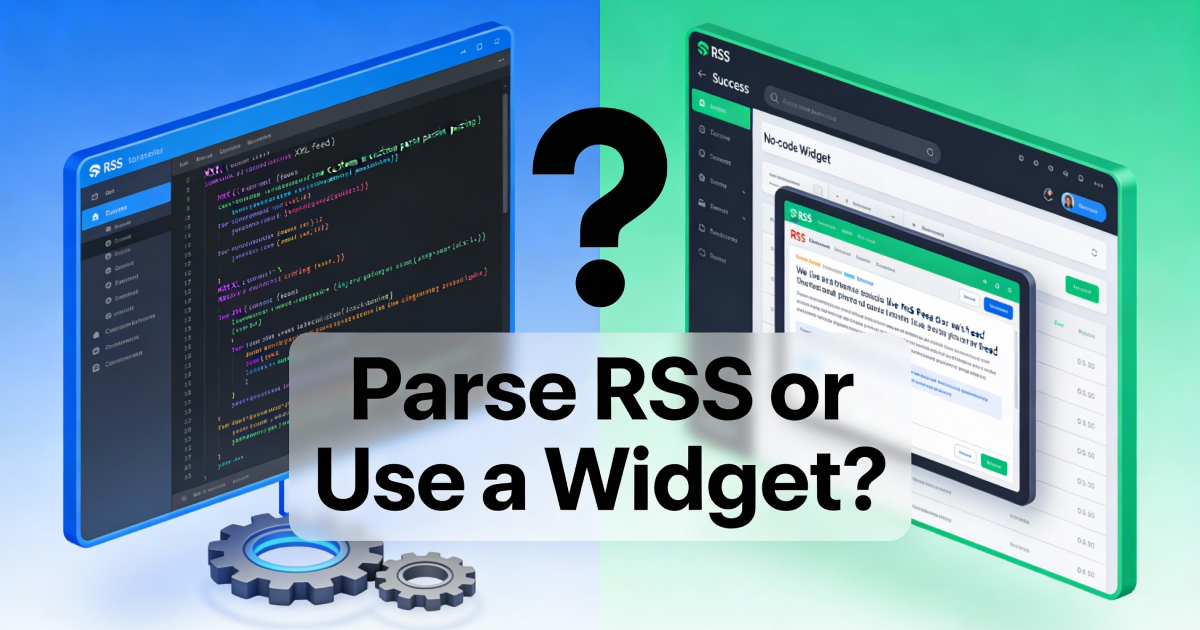SEO and RSS feeds
Contents
Does RSS help my SEO?
A hot topic for any website owner is that of SEO (search engine optimization). This is the ability of a site to rank highly for particular search terms in search engine results. If you do not rank well in search, you may be limiting your traffic considerably. Many efforts are made therefore to improve sites traffic by improving search visibility. One of the ways this is achieved is to increase the amount of content at the site, so that the number of keywords found by search engines is maximized. In addition, search engines generally display the most recent content that meets their criteria wherever possible. This article about RSS and SEO should help you understand the situation a little better.
RSS feed items will not enable much better ranking as their content is syndicated and therefore not unique. However, the increase in traffic that is generated as a result of your site being the place to go for information will help your SEO. The more time a user spends at your site, the higher it will rank too. Google keeps a track of all these metrics and uses them to keep track of your site and how much it appeals to the people who visit.
Duplicate content issues and Google
After many major Google updates over the last couple of years, serious attention has been paid to weeding out duplicated and low value content from search results. However, the content of an RSS feed is not accessed by search engine crawlers; all they will see is the XML code that created the RSS feed and the HTML of the FeedWind code snippet. The content will be detected as being syndicated which is not a bad thing as long as that is not the only content on the page.
Where Google does see links in the feed content it will consider these as it would any other link on your page, Running a feed that is off-topic from your page would affect SEO negatively. this is because Google detects anchor text and compares it to page content. If the anchors do not match the page content/topic, they could consider those links as a reflection of poor user experience/poor quality. To avoid this negative SEO, FeedWind widget links are all set as “nofollow“. This also reduces the amount of crawling that the RSS source site will receive from search engines.
Dofollow or Nofollow
Notably links in RSS feeds have “nofollow” instructions attached as default in most CMS. WordPress for example attaches nofollows to every feed link and image by default but that can be disabled in the dashboard. To avoid problems with negative SEO caused by link anchor text that does not match page content, nofollow is the safest way to go. We have implemented a default nofollow for all outbound links from the FeedWind widget. This is not configurable through our setup screen for FeedWind.
Does adding RSS to my site improve search ranking?
Adding RSS feeds can help a site ranking, but in a less direct way than the unique content available on your pages. Obviously if you are directing multiple feeds to your page, it is not practical or useful to take all the links and rewrite the content on your own pages.
If you include RSS feeds that have been aggregated or customized, they will contain a flow of keywords that you will not necessarily rank for. If these keywords are related semantically (by meaning) to other words and phrases on your site, they will be seen as relevant. The freshness of information is also a measure of how well your pages will rank. Having an RSS feed on the page means you are getting information from somewhere. That information will usually be a blog, news, search results or product review or something that is updated regularly (as opposed to static content).
Information from Google
Google do not discuss exactly how they treat SEO and RSS feeds but Matt Cutts (the Google Search Chief Engineer) did explain that RSS feeds need to contain recent information. There is an interesting blog article on the subject of how does Google index RSS / Atom feeds at the the Google Webmasters Blog.
The only known ranking factor relating to RSS feeds is based how many subscribers your feed has. The more people that use your feed, the better rank you will get. Note this is probably only a minor ranking factor for the feed source page unless you have significant subscriber numbers.
What is important to note is that the SEO value is directed to the source of the RSS feed – in other words, if you publish RSS on your site, the site that delivers the RSS feed to your widget gets the SEO value and faster indexing than otherwise they might. This also means that publishing a widget containing an RSS feed from your blog onto your homepage is a good way to get fast and thorough indexing of pages by Google.
Check your RSS feed contains recent information
You can easily check this by simply pasting the feed URL into the FeedWind setup screen and looking at the preview. By default, your feed will show news items and their date of publication. If you see that your feed contains too many old items, try a different feed or find alternatives where possible. If the old entries in an RSS feed you are using are all related to a particular topic you can do without, you can use our feed keyword filtering functionality system. This will weed out the stuff you don’t want to appear in your RSS widget feed.
Use multiple feed containers
If you are covering a broad topic you might want to include several feeds in separate containers. This will allow you to display multiple RSS feeds on a website and use our RSS feed aggregator to add together feeds from different places and display them combined in a single RSS feed widget.
Offering a good user experience is what counts
Whatever your aims are for your RSS feeds, they provide audiences with better navigation, up to date information and the website owner some SEO value. There is certainly no punishment for having RSS feeds on a page (which in theory duplicates content from elsewhere). Google encourages good content to be shared like this as it improves the user experience and accessibility of online information.
Go ahead and make an RSS feed widget – it’s simple, adds value to your pages and only takes a few moments to set up!


